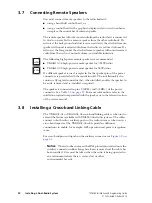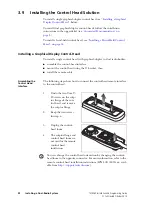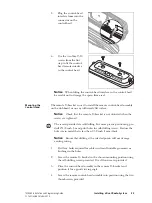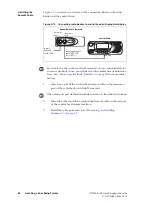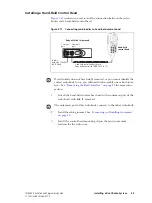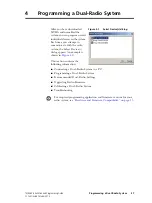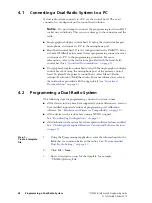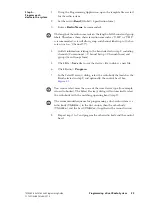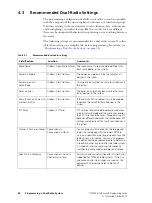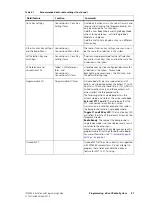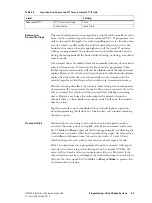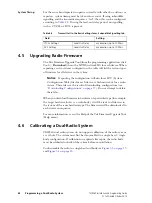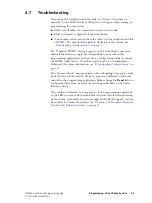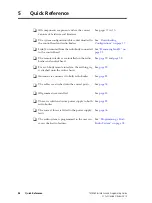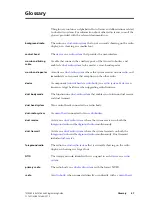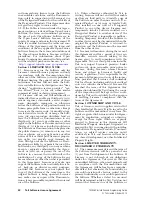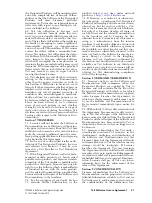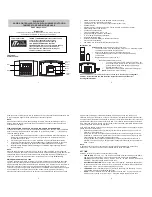
42
Programming a Dual-Radio System
TM8260 Installation and Programming Guide
© Tait Limited
October 2014
4.4
Crossband Repeater Settings
The following settings are for cross-band repeater operation only. These
settings require a cross-band linking cable to be installed between the radio’s
auxiliary ports. For more information, see
“Installing a Cross-band Linking
Your cable may have additional connections that require further pro-
gramming (for example, GPS, ignition sense, and external alert). For
information on settings related to these additional connectors, refer to
the installation instructions for your cable (see
), or contact your radio provider.
Programmable I/O
and Audio Settings
At a minimum, settings in
must be
programmed for both radios.
Notes:
1.
Select Busy Status (
) to re-
transmit any signal.
2.
Select Signalling Audio Mute Status (
) to transmit valid signalling only. This is
recommended if the repeater is to operate on a scan group where
member channels require valid subaudible signalling. Otherwise the
radio may re-transmit short bursts of activity when a channel is busy
but not captured due to invalid activity.
3.
D-Split means the receiving radio will sound the repeater audio. To
silence the repeater signal on the receiving radio, select C-Bypass
Out.
Table 4.2
Cross-band settings in the Programmable I/O form, Digital tab
Pin
Mode
Direction
Label
Action
Active
Debounce
AUX_GPI1
Conventional Input
XBAND_TX
Crossband Tx Input
Low
10
AUX_GPIO5 Conventional Output
BUSY
Busy Status
1
Low
None
Signalling Audio Mute
Status
2
Table 4.3
Cross-band settings in the Programmable I/O form, Audio tab
Pin
Tap In
Tap In Type
Tap In
Unmute
Tap Out
Tap Out
Type
Tap Out Unmute
Rx
None
A-Bypass In
On PTT
R7
D-Split
3
Busy Detect
1
Busy Subaud
2
EPTT1
T5
A-Bypass In
On PTT
None
C-Bypass 0ut
On PTT



